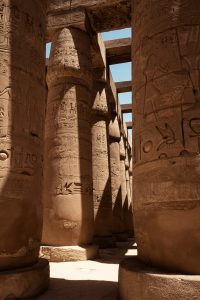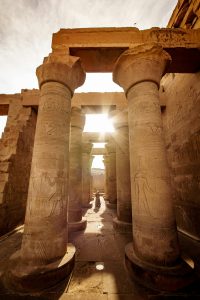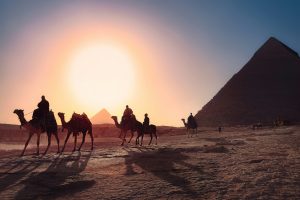Fascinating Facts About Ancient Egypt
1. Pyramids and Engineering Marvels
- Great Pyramid of Giza: The Great Pyramid of Giza, one of the Seven Wonders of the Ancient World, was originally 146.6 meters (481 feet) tall. It was the tallest man-made structure in the world for over 3,800 years.
- Precise Alignment: The pyramids are aligned with such precision that some theories suggest they may have used advanced knowledge of astronomy and mathematics. The sides of the Great Pyramid are closely aligned with the four cardinal points of the compass.
2. Mummification and Afterlife Beliefs
- Mummification Process: The ancient Egyptians practiced mummification to preserve the body for the afterlife. This process involved removing internal organs, drying the body with natron salts, and wrapping it in linen.
- Book of the Dead: They believed in a detailed afterlife, which was documented in texts like the “Book of the Dead.” These texts provided spells and instructions to help the deceased navigate the afterlife and reach the Field of Reeds, a paradise-like destination.
3. Complex Writing Systems
- Hieroglyphics: Ancient Egyptian writing, known as hieroglyphics, consisted of over 700 symbols. These symbols could represent sounds, words, or concepts and were used for religious texts, official inscriptions, and monumental art.
- Rosetta Stone: The Rosetta Stone, discovered in 1799, was crucial in deciphering hieroglyphics. It features the same text written in Greek, Demotic, and hieroglyphic script, which allowed scholars to understand the ancient language.
4. Remarkable Innovations and Contributions
- Calendar System: The ancient Egyptians developed a 365-day calendar based on the solar year. This calendar was divided into three seasons: Akhet (flooding), Peret (planting), and Shemu (harvesting).
- Medicine and Surgery: They practiced advanced medicine and surgery for their time. Medical texts like the Edwin Smith Papyrus and the Ebers Papyrus detail treatments for wounds, fractures, and diseases, as well as surgical procedures.
5. Religion and Deities
- Polytheistic Beliefs: Ancient Egyptians worshipped a pantheon of gods and goddesses, each associated with different aspects of life and nature. Key deities included Ra (the sun god), Osiris (god of the afterlife), and Isis (goddess of magic and motherhood).
- Pharaoh as a God: The pharaoh was considered a living god on earth, a mediator between the gods and the people. The pharaoh’s role was to maintain Ma’at (cosmic order and justice) and ensure prosperity for the kingdom.
6. Architectural Wonders and Art
- Temples and Monuments: Temples like Karnak and Luxor, as well as monuments such as the Abu Simbel temples, showcase the architectural and artistic prowess of ancient Egyptians. These structures were often decorated with elaborate carvings and paintings.
- Artistic Style: Egyptian art followed strict conventions and symbolism. Human figures were depicted with heads and legs in profile, but torsos facing forward. This style ensured that each part of the body was shown clearly and recognizably.
7. Daily Life and Society
- Social Structure: Egyptian society was highly stratified, with the pharaoh at the top, followed by nobles, priests, scribes, artisans, and peasants. Social mobility was limited, but individuals could improve their status through service to the pharaoh or success in their professions.
- Role of Women: Women in ancient Egypt enjoyed relatively high status and legal rights compared to other ancient cultures. They could own property, initiate divorce, and engage in business. Prominent female figures included Hatshepsut, one of the few female pharaohs.
8. Cultural Practices and Customs
- Festivals and Celebrations: Festivals were an important part of Egyptian culture, often linked to religious events and agricultural cycles. The Opet Festival, for example, celebrated the link between the pharaoh and the god Amun, involving elaborate processions and rituals.
- Food and Cuisine: The Egyptian diet was diverse and included bread, beer, fruits, vegetables, and fish. Honey was a common sweetener, and they used various spices and herbs to flavor their food.
These intriguing aspects of Ancient Egypt reveal a civilization that was advanced, deeply religious, and culturally rich, with a lasting legacy that continues to captivate people around the world today.






